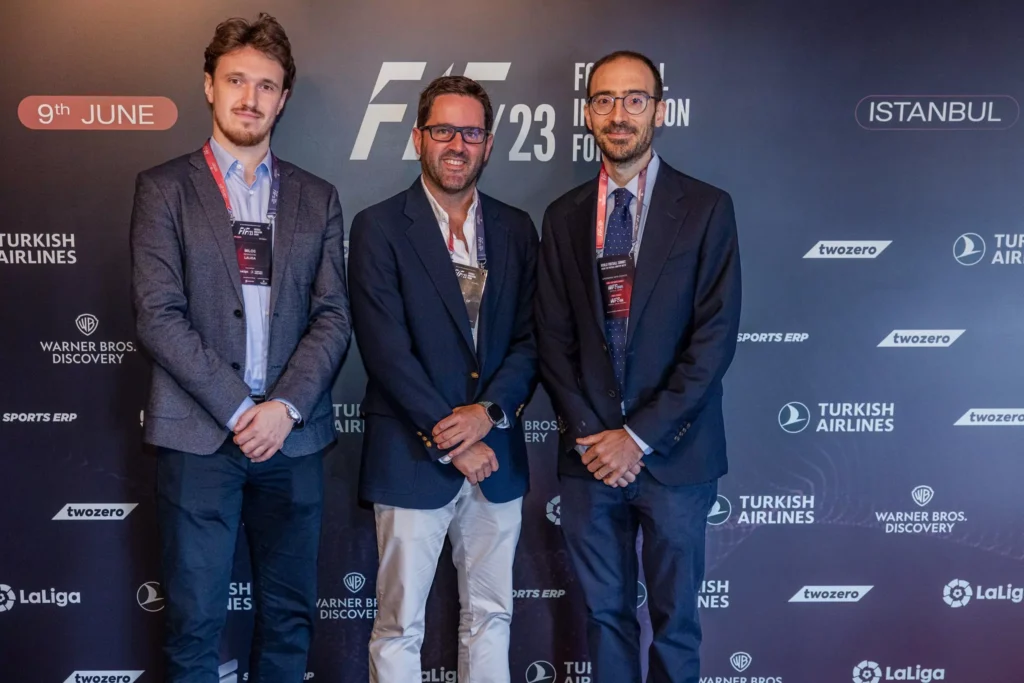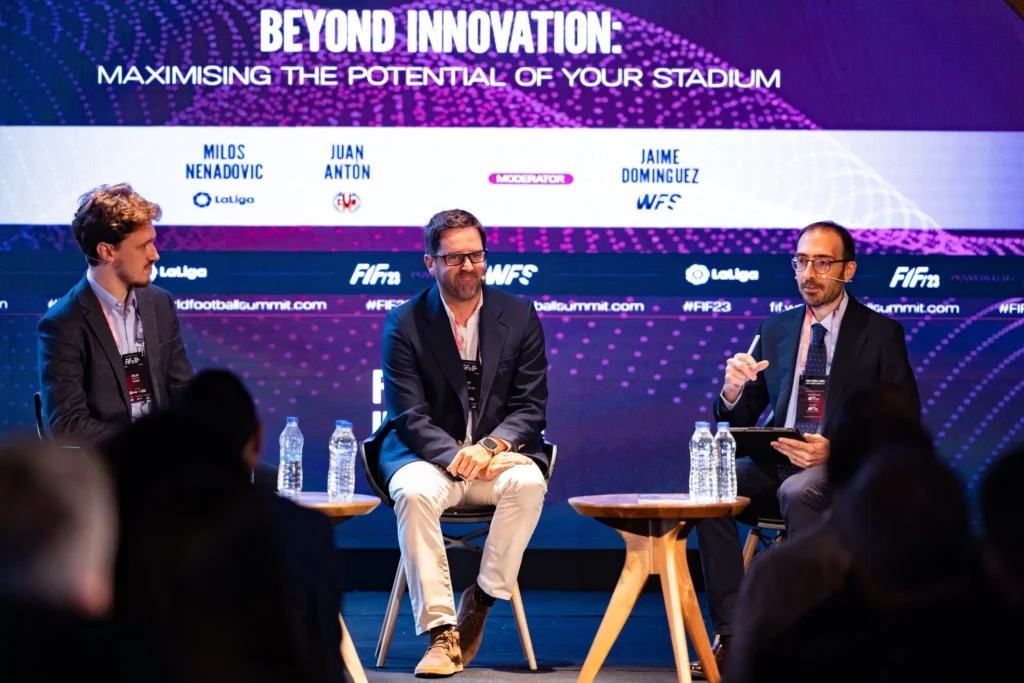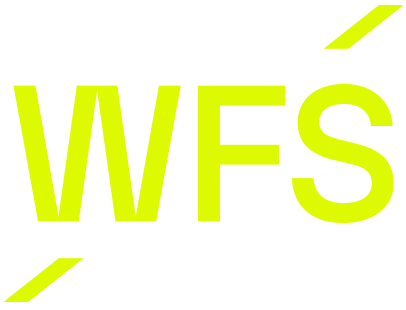Pop superstar Taylor Swift is filling up stadiums right and left: whether she was attending current boyfriend Travis Kelce’s matches on the NFL, or on her record-breaking tour, she’s the perfect embodiment of stadiums’ new strategy of revenue maximization
You better believe she is still bejeweled. When music superstar with the Midas Touch Taylor Swift walks in the room, she can still make the whole place shimmer. And, rearing up to the Super Bowl, every match celebrated in the wake of her relationship with Kansa’s City Chiefs’s Travis Kelce started having a very special economic glimmer thanks to her presence. And just because, indeed, she walked in the room.
Taylor Swift’s continuous appearances throughout the season ―she attended thirteen matches in total supporting the Chiefs, starting on September 24 and ending on February 11― has notoriously brought a lot of attention, and its subsequent income, to the American football league even if she was on the screen an average of 40 seconds for every three hours of game.
A NEW FANDOM AND NEW ECONOMIC HEIGHTS
In fact, Ms. Swift has generated an equivalent brand value of $331.5 million for the Kansas City Chiefs and the NFL, according to data provided by Apex Marketing Group to Front Office Sports, and she’s also helped renovate its audience. Interest in the game spiked 169% as compared to last year, and it was the most followed season by women since 2000, and the most followed by people between the ages of 18 and 34 since 2019.
And although this is very impressive, Taylor Swift and her fandom have been revitalizing the sports industry for a while now. Not just with their support of the actual game, both in attention and money, but in the diversification of stadium projects. And they have been doing so, in fact, since March of 2023, when the singer’s Eras Tour started filling up stadiums in every major city in the world, allowing for spaces once reserved for sports to exploit a new stream of income on what would have otherwise been another slow, unprofitable weekday.
STADIUMS ARE ENTERING THEIR CONCERT ERA
Over the past few years, many major stadiums around the world have undergone an overhauling process that has rendered them fit to perform as any multi-purpose arena, and they are trusting innovation to lead the way. Real Madrid’s Santiago Bernabeu Stadium is perhaps one of the most known cases: Still under construction, the renovations will include both retractable grass and a retractable dome, as well as a foldable section of the stands to further increase its capacity.
“We are treating it like a new stadium,” said Real Madrid’s Head of large events and concerts Rocio Vallejo-Nágera. “Up until now, there have been some concerts here – Bruce Springsteen in 2016 and the Rolling Stones in 2014 – but it hasn’t really been a big thing to do at the Bernabeu. It was built for football, not music, because the production tunnels were too narrow. So we’ve changed that, and now we’re open for business”.
Something really similar is happening with WFS Award winning Tottenham Hotspur Stadium, which now also serves as one of the capital’s biggest music venues. With a capacity of 61,000, the British club has transformed its grounds into a year-round music venue, which occupies the middle ground – in terms of capacity – between The O2 in Greenwich (capacity 20,000) and Wembley Stadium (75,000 to 90,000 seated and 15,000 standing).
Furthermore, demonstrating that both stadiums are open for not just the entertainment business, but for every business in general, the Tottenham Hotspur Stadium, which is the first purpose-built NFL stadium outside of the US, will host a minimum of two games per year over a 10-year partnership, something the Santiago Bernabeu has also announced will do, hosting a match of the 2025 league.
ENHANCING THE STADIUM EXPERIENCE
But why are stadiums pivoting their strategy? The answer is simple: ”You never know what’s going to happen on the pitch”, said Milos Nenadovic, Head of the Business Infrastructure vertical of the LaLiga Impulso project, during a panel in the 2023 Football Innovation Forum organized by World Football Summit. “So, even though the quality of your product is outside your control, you have power over everything around the experience of it”.
Indeed, thanks to the development of technology, stadiums are now able to have more control than ever over what goes on in the stadiums, as people now access them thanks to online ticketing, access control, circulation strategies or seat comfort. All of them, of course, catered to the customer’s needs.
A PERSONAL EXPERIENCE FOR EACH FAN
“The challenge”, explained Nenadovic, “is to give each group an optimal experience, because other platforms are already offering it”. In restaurants, as he continued, everything involving the experience, like the circulation or flow, is pretty clear. Bathrooms are always on the back, to the left. In football, people are somewhat left on their own to find the bathroom, the food stands, or their seat. And it isn’t always a particularly easy task given the space.

“Of course, we need to change that to increase customer spend”, he added. The point of this, however, is not just income. They want newer, different audiences to go to stadiums, and Nenadovic admits that the sport is not enough to bring new people, or to keep the space going at all. “If there were enough fans to fill up every stadium in the world we wouldn’t be here, talking about this, but we are. So we need to cater to those marginales sports groups and make sure they have a reason to go into the stadium”, he stated.
COMPETING WITH EVERY SINGLE FORM OF ENTERTAINMENT
Venturing into new purposes and new markets, stadiums are finding new streams of income, but new competitors as well. “What we need to focus on is that our competition is not simply other football clubs or any other sports, but every other entertainment option out there: bars, restaurants, cafes, even staying at home and watching Netflix”, Nenadovic said. To keep up, they need to find out what it is that their customers actually desire. Whether they want to work out, to have a party, or to simply have a nice meal, a stadium should become the answer for it. “We want stadiums to become an entertainment center for the city”, he announced.
So far, finding those answers is their biggest challenge: “People need to understand that stadiums are not something you go to every two weeks to watch a football game. It’s an arena, or a venue, where the opportunities you have are limitless, but we must make sure they answer their questions as clients”. Therefore, clubs need to teach the market the possibilities, then to answer the market’s questions and, finally, to create a product that answers those questions.
WIDE TRAINING SPACES
And, even though a lot of attention has surrounded big events, like concerts or the NFL, Nenadovic points out that he doesn’t want the public to always think about macro-events. Indeed, sometimes a nice, simple lunch will do. But it doesn’t even have to be in the stadium.
“We need to see the training ground as a potential commercial area as well”, he pointed out. And for that, he explained, there are two main ways to do it. First, the service way. As a lot of training grounds are located outside the city, in industrial or even rural areas, their approach has been to provide service to those people who live nearby. “They also need somewhere to eat lunch, or somewhere to go to the gym, and those are assets you already have on our training ground. The only thing you need to do is expand them for the general public”, said Nenadovic.

On the other hand, they have experiences and events. Just as they try to focus on monetizing the non-match days of stadiums, they try to do the same on training grounds: “Let’s say you want to have a team building, organize a party, a wedding, a birthday, a bootcamp for fitness, a 10K race. Anything. We know these microevents are not going to break the bag, but they are going to bring more notoriety to the space and help portray it in the eyes of the public as a place to answer your questions”.
STADIUMS ARE ALREADY ON IT
And there are many clubs and stadiums in LALIGA that are already finding ways to offer answers, which can be separated into match-day and non-match day answers. On the match day side, Spain’s Villarreal, for instance, has integrated in its stadium a quality offering of restaurants within the stadium, so you can spend time on the stadium beforehand and be there right when the game begins. Other clubs in Spain have other types of experiences, like Valencia’s Levante, which offers game-day birthday, walking on the pitch, shootout on the pitch experience.
When it comes to non-match days, clubs are focusing on the micro events Nenadovic was mentioning. Sevilla’s Ramón Sánchez-Pizjuán Stadium has created a whole division dedicated exclusively to events: birthdays, weddings, christmas parties and even smaller events for companies. Internationally, even Tottenham Hotspur Stadium is delving into non-macro events, as it will host the next Football Innovation Forum, organized by World Football Summit, a one-day invite-only international event focused on the economic power of innovation with top executives in the sport’s industries. You can sign up for it here, and help trace the future of the industry. Get in touch with our team and lets make it happen.

